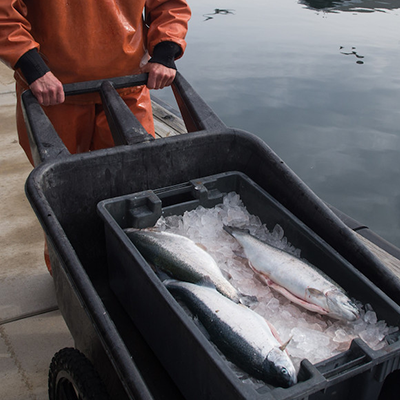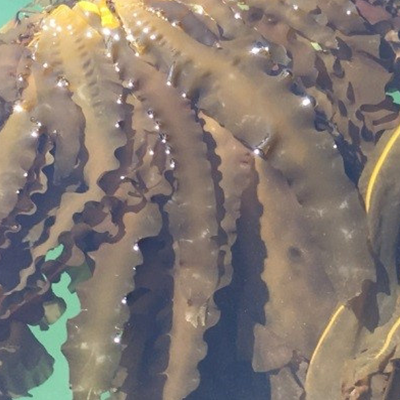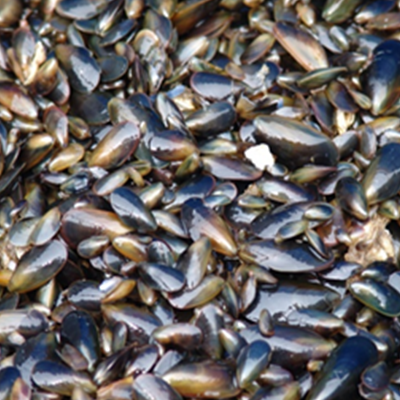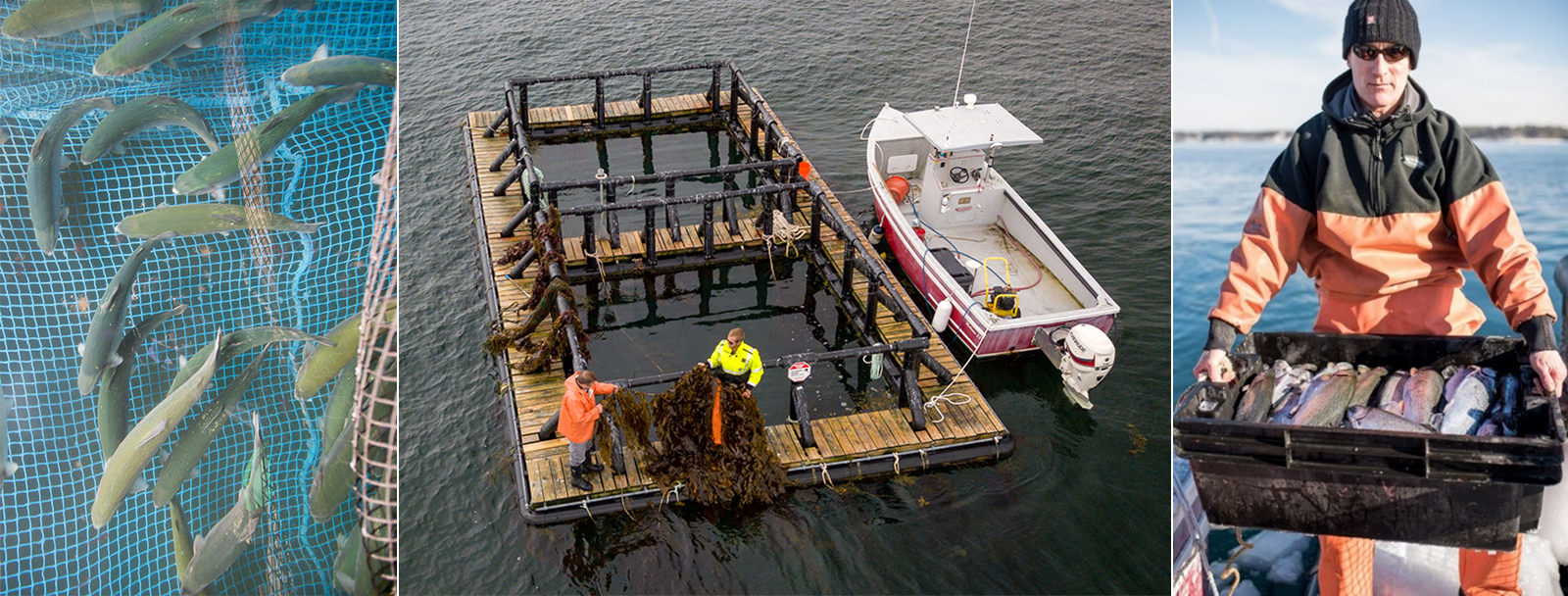
Local Participation in Offshore Aquaculture
New Hampshire Sea Grant’s AquaFort serves as an offshore aquaculture training platform and research site. The AquaFort research program recruited local fishermen and farmers from NH, ME, and MA to participate in workshops and daily operations of an offshore aquaculture farm. During this period (2018-2020) the AquaFort was constructed and deployed, and two seasonal grow-out trials were conducted. Participants benefited from hands-on training in:
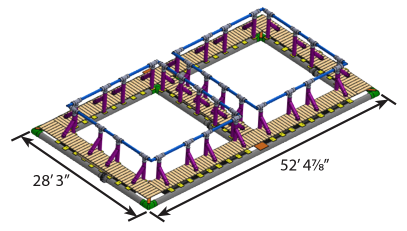
The AquaFort structure is designed for two nets that are 20’ x 20’ x 40’ deep.
- Site selection and permitting
- Cage construction and deployment
- Fingerling acclimation to seawater and transport
- Aquaculture of Steelhead trout, mussels, and kelp
- Farm maintenance
- Harvest and transport to market
- Economic analysis of farming the AquaFort
- Aquaculture business planning
Announcement about NH Sea Grant's research award
Farmed Species
Potential Production
20-ton (40,000 lb) production capacity per year:
- 30,000 lbs of fish (steelhead trout)
- 10,000 lbs of shellfish (blue mussels)
Our Goal
Successful execution of the AquaFort program will lead to (1) increased investment and employment opportunities in offshore aquaculture, (2) the production of fresh, local seafood, and (3) reduced reliance on seafood imports.
What is IMTA?
Integrated multi-trophic aquaculture (IMTA) is a self-contained aquaculture system that allows multiple species to grow at the same time within a single floating structure. “Multi-trophic” refers to levels of a food web. Each of the different species in the IMTA system provides a benefit to the others: Steelhead trout, blue mussels, kelp and dulse.
Contact
Michael Chambers, Ph.D.
Aquaculture Extension Specialist
michael.chambers@unh.edu
This work is currently funded by the University of New Hampshire's Center for Sustainable Seafood Systems.
